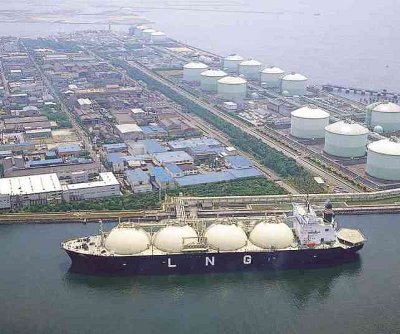Petronet LNG Ltd. of India recently announced it reached an agreement with Houston-based United LNG LP’s Main Pass Energy Hub, under the terms of which the latter will provide fuel to the Indian company for 20 years.
Petronet is India’s largest importer of liquefied natural gas, and this is the company’s first such U.S. deal. United LNG will provide 4 million tons yearly, and prices will be pegged to the Henry Hub rates, with final details being taken care of by the end of 2013.
 And though this is Petronet’s first U.S. LNG deal, it isn’t India’s first. GAIL India Ltd. had already approached the U.S. for an LNG agreement, while other Indian companies like Reliance Industries Ltd. and Oil and Natural Gas Corp. continue to work to boost LNG production in an increasingly energy-hungry nation.
And though this is Petronet’s first U.S. LNG deal, it isn’t India’s first. GAIL India Ltd. had already approached the U.S. for an LNG agreement, while other Indian companies like Reliance Industries Ltd. and Oil and Natural Gas Corp. continue to work to boost LNG production in an increasingly energy-hungry nation.
GAIL’s deal with Cheniere Energy (NYSE:LNG) will provide for 3.5 million tons of LNG per year for 20 years, via Cheniere’s Sabine Pass terminal in Louisiana.
After news of the deal broke, Petronet shares rose 3 percent in Mumbai, although shares have dropped 12 percent thus far in 2013. Meanwhile in New York, natural gas prices have continued an upward trend, rising 25 percent this year on top of a 12 percent rise in 2012. May contracts are now at $4.175 per million British thermal units.
The Main Pass terminal mentioned above is being jointly developed by Freeport McMoRan Energy LLC and United LNG. Expected capacity will be 24 million tons annually, with exports set to begin in 2017.
The facility is structured such that it will receive incoming gas via pipeline, which will then be stored in salt caverns and subsequently liquefied on six floating vessels situated some 16 miles off the Louisiana coast.
The Main Pass project has already received approval from the U.S. Department of Energy to export LNG to any nation with existing free trade agreements. However, both operators intend to petition for export approval to non-FTA nations, according to Platts.
The Natural Gas Conundrum
India has now become one of Asia’s biggest oil and gas importers, and more than 75 percent of domestic needs are provided for via imports. Domestic oil and gas production has been on the decline in Asia (although companies are opening up initiatives for shale exploration both on and offshore), hence necessitating vast amounts of imported energy.
This is good news for the U.S., which has in short order gone from importing energy to possibly becoming a net energy exporter. In fact, production of natural gas is now so abundant that massive quantities are simply being burned off (flared)—which results in big losses in terms of potential revenue.
Moreover, LNG prices over in Asia are usually three to four times more expensive than prices in the U.S. due precisely to this imbalance in supply.
Our analysts have traveled the world over, dedicated to finding the best and most profitable investments in the global energy markets. All you have to do to join our Energy and Capital investment community is sign up for the daily newsletter below.
As a result, companies have been pushing hard to get export terminals approved domestically so that the U.S. can profit off all this gas being produced. It’s a two-edged sword, though. As export volumes begin to rise, domestic prices will no longer be so low. And that will likely have a domino effect in terms of international sales dynamics.
Meanwhile, demand from Asia is growing explosively. Chinese LNG imports hit 1.83 million metric tons, a figure that marks an increase of 21 percent from 2012. The nation is consuming LNG at the rate of more than 4.5 trillion cubic feet every year. Japan, especially after Fukushima, is catching up fast.
Major companies here in the U.S. are betting heavily on LNG exports. We’re talking about oil and gas majors like Exxon (NYSE:XOM), Royal Dutch Shell (NYSE:RDS.A), Cheniere, and the like. But most of them, so far, have focused on potential exports to the Eurozone rather than Asia.
At some point, the U.S. administration needs to make its position clear as far as LNG exports are concerned. As mentioned earlier, in the short-run, open LNG exports could be an excellent thing for the domestic economy. We’d see a flurry of terminal development activity, and the whole LNG export web of activity will come alive.
However, in the longer run, this will inevitably erase some of the advantages we now enjoy thanks to our natural gas surplus. Domestic prices are going to rise, and that will impact many other sectors. Automobile manufacturers, for one, are increasingly looking to natural gas when it comes to heavy and long-haul vehicles. Many power plants are seeking out natural gas solutions. And increased costs is not what they want.
If you liked this article, you may also enjoy:


